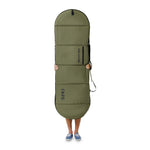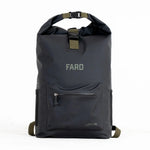
Many people think that surf shooting is easy. You just fix your apparatus, take a few shots, and magic happens. Reality is a little different. Surf photography is an art. Good surfing photographs speak for themselves.
In this article, we've broken down everything you need to know to step into the world of Surfing photography. From capturing a wave in the ocean to finding the perfect surf spot, we’ve got you covered. Let’s dive in.
What Equipment Do You Need?
Camera
You don't need a high-end camera to get great surf photography results. A reliable DSLR or mirrorless camera with interchangeable lenses is more than sufficient for beginners. Experiment and find a style that matches your vision Long Lenses, Tripods, and Monopods
A telephoto lens like a 70-200mm or 100-400mm allows you to capture pictures inside waves from a safe distance. These lenses are great for catching surf photography moments with clarity and emotion.
Stabilize your shots with a tripod or monopod—especially helpful when you're waiting for that perfect ocean wave picture to break in front of your lens.
The Best Camera Settings for Surf Photography
Shutter Speed
To freeze motion in pictures of surf, use a fast shutter speed (1/1000s or higher). Slower shutter speeds can give a dreamy effect, perfect for creating amazing surf pics with blurred wave motion.
ISO
Use a low ISO like 100 in bright light for clean images. For cloudy days or evening light, gradually raise the ISO while trying to minimize noise—especially important when aiming for beach wave images with rich detail.
Aperture / F-Stop
A higher f-stop (like f/8 to f/16) ensures more depth of field, ideal for keeping both the surfer and the wave in focus. This is key to capturing coolest surfing pictures that are both sharp and layered.
Learn the Movement
Before pressing the shutter, study how the ocean waves move and how surfers react. Anticipating their timing helps you better picture a wave in the ocean and know exactly when to shoot. This is especially helpful when you're at a new surf spot, observing unique wave behavior.
Experiment With Composition
Great surf photography isn't just about technique—it’s about vision.
Rule of Thirds
Align the surfer or wave with the grid lines of your frame to create dynamic, balanced compositions.
Leading Lines & Symmetry
Use wave lines, surfboards, or beach angles to guide the viewer’s eye. Symmetry, when present, creates striking, memorable shots.
Tell a Story
Good photos don't just show—they capture emotions. Whether it’s a look of determination or a wipeout in progress, these details elevate a good shot to a great one.
Capture Emotions and Expressions
The best surfing photographs aren't always about the biggest wave—they're about emotion. A surfer’s grin, the intensity of a drop-in, or even calm focus can define a shot. These candid surfer pics make your work feel alive.
Where to Start Shooting Surf Photos
Shooting from land is the best way to begin. It’s safer and offers more control over framing. From cliffs, jetties, or even the beach, you can capture beach waves pictures that show the full power and grace of the sport.
As you grow confident, explore in-water photography with proper underwater housing for your gear. This is how you get truly immersive pictures inside waves and artistic ocean beautiful pictures.
Practical Tips
Know the Surf Spot
Before heading out, research the surf spot you plan to shoot. Knowing the wave patterns and best angles will help you get those biggest wave pictures without guesswork. Here’s a helpful guide to the best surfing destinations.
Shoot During Golden Hours
The light during early morning and late afternoon creates warm, golden tones—ideal for beach and waves photography.
Experiment
Play with angles and techniques. Don’t be afraid to push your boundaries. Some of the most amazing surf pics come from spontaneous moments and creative risks.
Anticipate the Moment
Anticipation is everything in surf photographer work. Watch your subjects and be ready when they pop up or carve a wave.
Protect Your Gear
Sand, saltwater, and moisture are rough on cameras. Always use protective housings, and clean your equipment regularly to extend its life—especially if you're working on intricate pictures of surf or shooting up close.
Conclusion
Surf photography is more than just pointing and shooting. It’s about capturing fleeting moments inside the wave, showing energy and emotion, and telling a compelling story. Whether you're capturing a drawing of a wave or documenting elite moves by pro surfers, every image you take builds your eye and style.
So grab your camera, head to your favorite beach, and start snapping! Before long, you'll have your own gallery of stunning surfer pics and waves photography that capture the magic of the sea.
And if you're looking for the perfect gear to keep your camera and surf essentials safe, check out our curated selection at Faro Board Bags—trusted by surf photographers and wave chasers alike.





